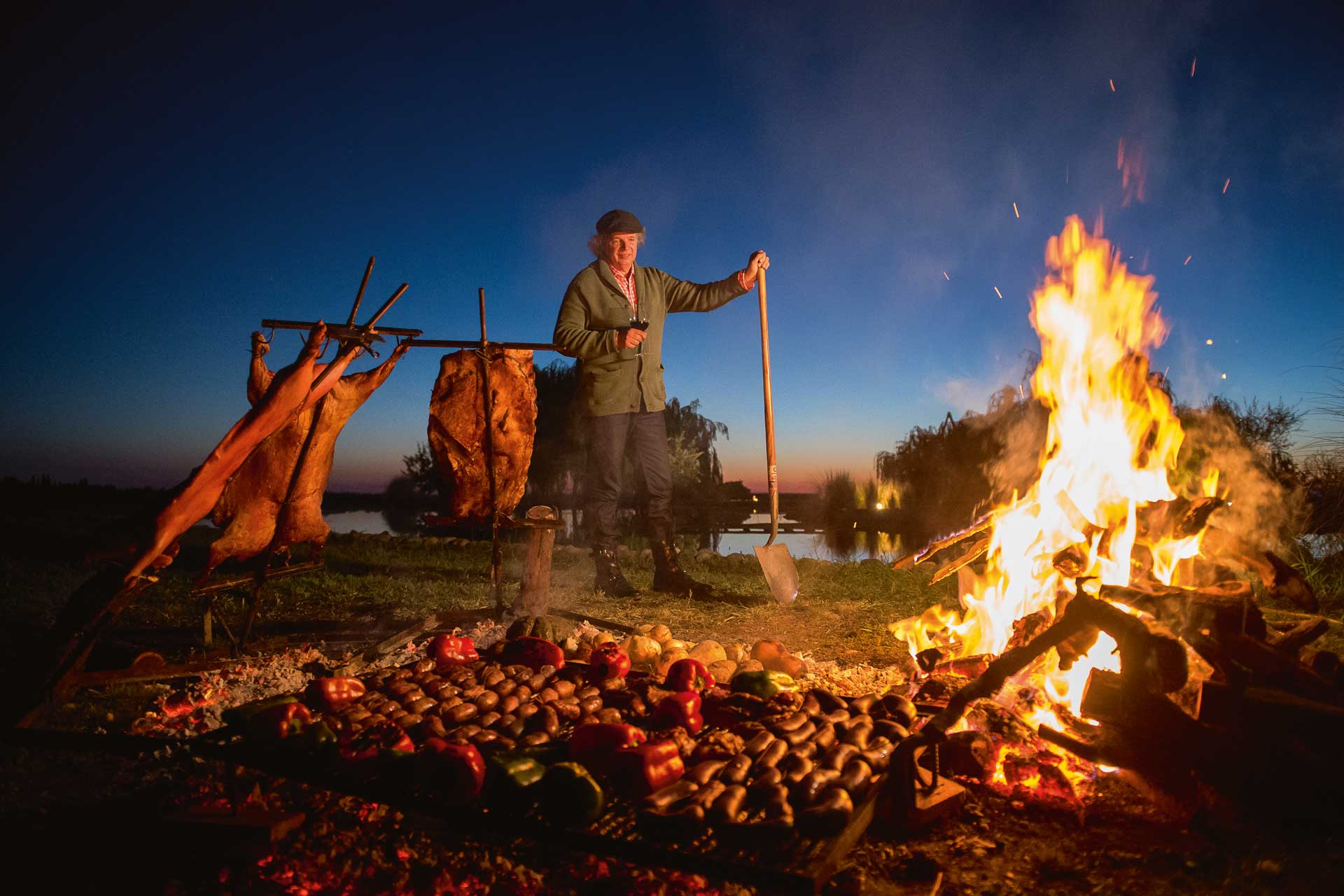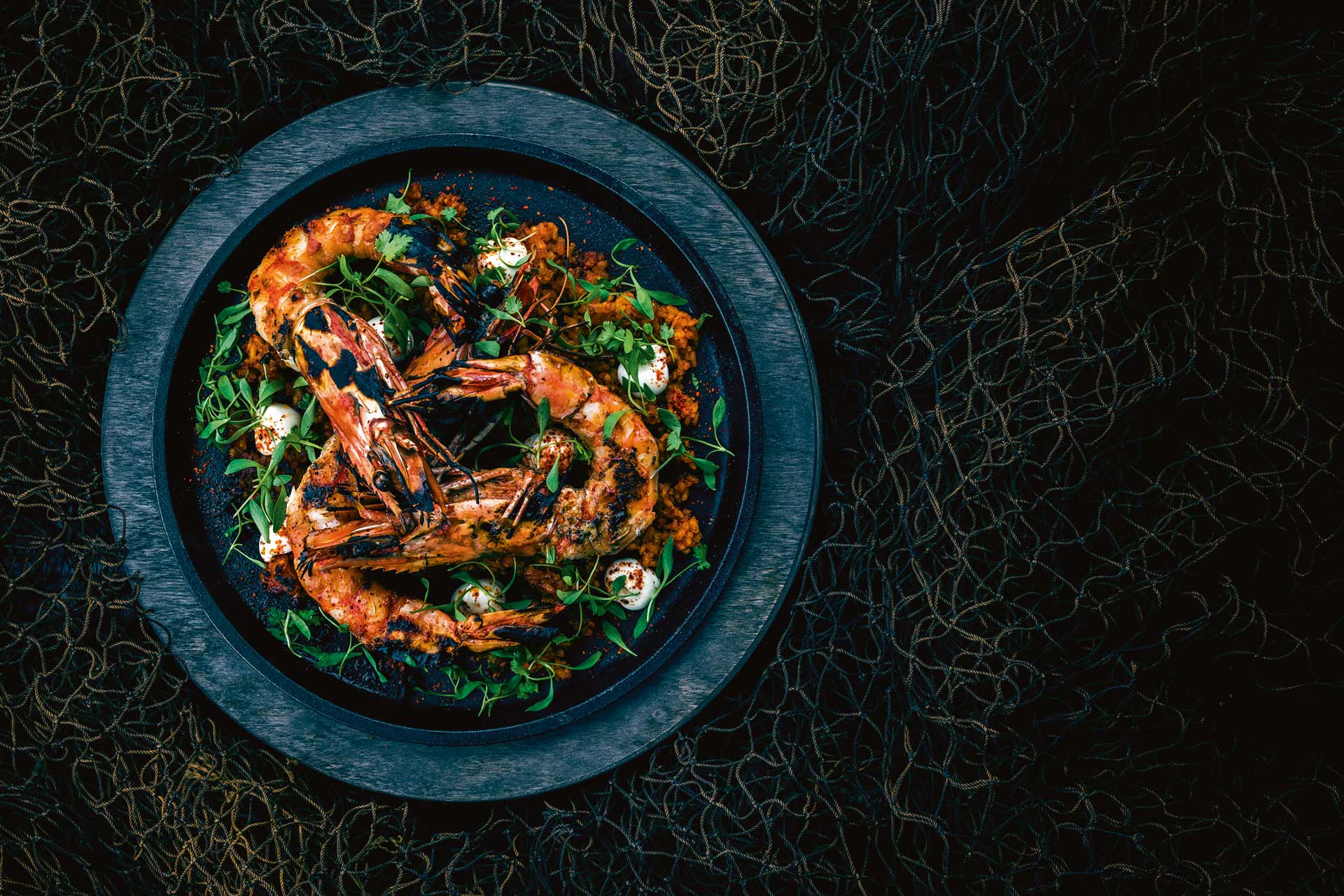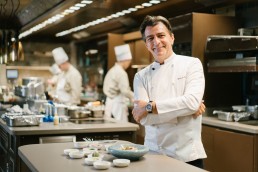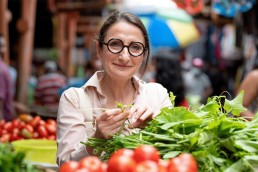A passionate advocate of open-fire cooking, Argentine chef Francis Mallmann talks to Lucy Lovell about how his signature style is winning countless admirers around the world.
Francis Mallmann is a difficult man to pin down. The Argentine chef, restaurateur and hotelier is more at home on his private island in Patagonia, cooking over an open fire, than taking part in an interview in Buenos Aires. “As I grow older I like to be more in nature, that’s for sure,” he tells me in his tiny restaurant Patagonia Sur. “It makes me feel better and happier.” He arrived in the city from his restaurant in the vineyards of Mendoza no more than an hour before, and he’ll leave for Uruguay via ferry to visit his hotel and restaurant there in a couple more. True to his nomadic reputation, he’s a man that’s always on the move.
Despite this, he looks settled in his restaurant. He seems at home, sat by the open fireplace on a sofa strewn with antique embroidered throws, framed by shelves stacked high with eclectic objects from around the world. Wearing a denim beret and his signature red spectacles, he looks like the final piece of the puzzle, set into place. It’s clear that Mallmann’s restaurants are steeped with his identity – a concept that’s crucial for him. “It’s more important than the food,” he quips, before pointing out his favourite collection of French ceramics, which line the dining room shelves – all white, all handmade in Paris by Astier de Villatte. Beyond the exquisite pottery, just three wooden tables dressed with fine silverware sit in a dimly lit dining room, cloaked by black wooden panelling on oxblood-red walls.
“For me, the scene is very important,” he continues, leaning closer over a coffee table strewn with books about Patagonia. “That’s the first silent way of touching someone. When they walk in and nothing is said, but there’s this first message of joy, beauty, or mystery.” Mallmann’s magic touch has proven to be effective across a huge range of projects (he currently oversees a collection of nine restaurants), and he has a talent for turning undervalued sites into thriving foodie hubs.
The Argentine opened his first hotel and restaurant in 2003 in Garzón, Uruguay – then a rundown village that went into decline after its rail station closed. Mallmann’s five-bed luxury retreat, Hotel & Restaurante Garzón, helped revive the neighbourhood’s ebbing fortunes; now it’s one of South America’s must-visit food-and-drink destinations. A decade later, he teamed up with five-star resort The Vines in the wine-rich Uco Valley region of Mendoza. Set in the stunning mountainous landscape of western Argentina, Mallmann is Partner in onsite restaurant Siete Fuegos (literally, ‘Seven Fires’ in English), so called because of his seven open-flame cooking techniques used in the kitchen. More recently, the in-demand chef was snapped up by luxury hotel company Faena Group to head up restaurant Los Fuegos at Faena Hotel Miami Beach, a key part of its billion-dollar Faena District development.
From the rustic simplicity of Hotel & Restaurante Garzón to the all-out extravagance of Los Fuegos, there’s one common thread that runs throughout Mallmann’s work: fire. A leader in the field, Mallmann championed cooking with fire during a time when molecular gastronomy was à la mode. He separated himself from the herd and dedicated years to inventing, researching and refining techniques that harness the flame. For some cooks, the open flame might be a daunting prospect, but for Mallmann nothing is more familiar. “It’s our language, to cook with fire,” he says warmly, speaking lovingly about a method of cooking that has been in his life since childhood, and in his family for generations. “It’s quite natural to me.”

But there was a time when Mallmann lost his connection with cooking over coals. Like many great chefs, he started his love-affair with food in Paris, and cooked his way through the kitchens of some of the great French stars of the time. He became – in his own words – an arrogant French chef, and copied what he had learnt for many years.
The turning point came in the form of one ingredient: the humble potato. Writing in his book Seven Fires, Mallmann describes the moment he was invited to cook a meal for the International Academy of Gastronomy. It was, according to him, the catalyst to return to his mother tongue. “I think a guardian angel – a very Argentine angel – whispered in my ear at that point,” he writes. “She suggested an entire menu featuring potatoes, the great gift of South America to the world’s larder.” And so he sent his chef to Peru with a simple shopping list: a thousand pounds of potatoes. Even the tables were decorated with potatoes. Piles of them, ten inches high and covered in mud. After the prestigious guests devoured the nine courses, all of which featured potatoes, the meal was declared a resounding success.
From that moment on, Mallmann dedicated himself to cooking cuisine in the Argentine tradition of “wood, fire and cast iron”. In Hotel & Restaurante Garzón, the kitchen only uses fire; that means no electricity or propane, just a wood oven, grills and planchas. “If you want to make a tea, you light a fire,” he says proudly. Here, fire isn’t just used to add flavour, it also slows things down, encouraging guests to unplug and unwind. “It’s a pace I like very much,” he adds. “It’s not very modern, but it’s how we lived in the past. I was raised in a home a bit like that, so it brings me a lot of good memories.”
The Vines in Mendoza was a chance for Mallmann to broaden his horizons. He explains: “From 1992 onwards, I had wood ovens and grills, but Siete Fuegos was the first time I united all the techniques I liked. It was a beautiful experience.” At the time, there were seven techniques, although the number is always growing. They include the infiernillo, where two fires sandwich ingredients and cook from above and below. It’s best used for products with a skin – such as chicken or salmon – or salt-baking vegetables like beetroots. Rescaldo is an ancient technique – vegetables are buried in the ground with hot ashes and slow cooked for around four hours, meats up to seven. Siete Fuegos also uses the iconic asador. Also known as pirca or cruz, whole animals are butterflied and pinned on a metal cross, then cooked slowly for around eight hours next to an open fire pit, resulting in a crisp, smoky skin and soft meat.
“If you want to make a tea, you light a fire. It’s not very modern, but it’s how we lived in the past. I was raised in a home a bit like that, so it brings me a lot of good memories.”
Perhaps the most famous technique is also one of Mallmann’s newest: the dome. Capable of feeding up to 600 guests, the dome is constructed with an iron frame, and a ring of fire follows the rods in the ground. The frame is used to suspend meat or fish: whole Patagonian chickens, fish in bamboo beds, or rib-eye beef cooked for up to 12 hours. The entire process – from building the dome to roasting your last potato – takes 14 hours. “That’s the beauty of it, you cook things very, very slowly,” he says. “They achieve incredible temperatures and remain very moist and tender.” It’s efficient too. While hot coals work their magic on the meats, the ashes are used to cook vegetables.
There’s one goal at the heart of these techniques, and that’s flavour. Vegetables taste thick with smoke, and meat is impossibly tender. At Siete Fuegos, the menu is refreshingly simple, with dishes that balance the bold, charred flavours from the fire with light ingredients. Soup made from pumpkins cooked rescaldo is served with Trebolgiano cheese and fresh spinach; six-hour-cooked pork ribs come with a crisp celery and fennel salad; a rich ribeye from the parrilla is offset with ratatouille and a zingy green salad.
With a strong focus on local produce and seasonality, the chef’s menus vary depending on time of year and location. As such, the Miami-based Los Fuegos features a distinct menu, but diners will find the same Mallmann flavours. “I didn’t change my cooking, I just cooked different things,” he explains. “We changed completely to the products of Florida, with a bit of America as well – fish from hot waters, from warm seas.” Here, guests will find regional specialities like smoked whole local grouper and Maine lobster-tail tagliatelle. And Mallmann makes clear that learning to use new ingredients is a pleasure for him, rather than a chore. He sums it up perfectly: “Our language of cooking moves around the world, and we adapt to what we find.”

But Mallmann offers more than just food, he offers a taste of his lifestyle. For him, hosting dinners at hotels is a chance for him to completely immerse guests into a different way of life – and maybe instil some new habits. “I want to get them out of their routine, their mode of living. That’s what I like to do… to make them realise that there are better ways of living. Not that mine is the best one, but I really believe in beautiful things, in touching people in a way that they will never forget.”
One of the best ways to get the full Mallmann experience is to stay on his private island in Patagonia. A guesthouse there offers just four visitors the opportunity to spend five days taking fire-oriented cooking lessons with the man himself. At La Isla, there is no network coverage, no WiFi and no mobile phones. “People are really disconnected from the world for a week, which is very rare nowadays,” says Mallmann. “I can’t take too many because I need to work – and when we do that, I’m always there.” Unsurprisingly, hiring Mallmann’s private island for a week – with him on it – doesn’t come cheap: US$44,000 to be exact.
But you don’t need to trek all the way to Patagonia to get an authentic taste of the wilderness. There are many ways that Mallmann puts this approach into practice in his other establishments – from subtle touches to grand gestures. At Hotel & Restaurante Garzón, guests can choose to take their dinner in the mountains one night, or even in the local stream, where a couple can soak their feet in the cool water while eating in the sun. At his restaurant in France, there are poetry books on every table. “Some get inspired to recite a poem, and they read it aloud,” he says with a grin. “I really believe in their intimacy. I like to walk away and let them enjoy.”
Ultimately, he is looking to spark something in his guests – a flicker of rebellion or a flutter in the heart that might change them forever. According to Mallmann, the biggest secret to success is putting mystery back into service, and giving guests the opportunity to explore something different. “The worst enemies we humans have are routine and fear because they are the two things that paralyse us,” he says. “Service is stepping back, giving hints, suggesting different ways to live in the days they spend with you. Showing them a path and letting them go, not taking them by the hand.”
A romantic at heart, Mallmann believes that these magical touches can happen anywhere, at any time. When he senses that our interview is winding down, he asks if he can read me a poem. He then starts to recite one of the English poems written by his favourite Argentine poet, Jorge Luis Borges. “What can I hold you with,” he begins.
He reads slowly, his deep voice easily fills the small restaurant, while his little dog Luna curls up at my feet. It’s bewitching and perfectly encapsulates how this charismatic chef is like the fire he cooks with: wild, unruly and very intense – qualities that have fired up countless food lovers down the years, drawing more and more diners towards Mallmann and his growing hospitality empire.
CREDITS
Words: Lucy Lovell
Headline Image: © Audrey Ma
Magazine: Supper 14
Related Posts
18 April 2023
A New Level: An interview with Yannick Alléno
17 November 2022



